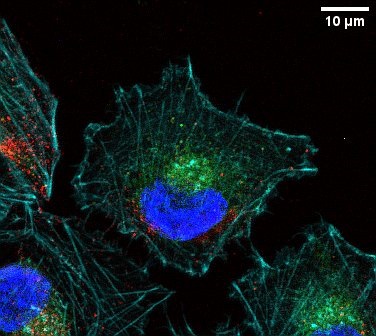Newly Discovered Fossil Fungi in Amber Illuminate Ancient Parasitic Relationships

Recent research conducted by the Chinese Academy of Sciences has unveiled the discovery of fossilized entomopathogenic fungi encased in mid-Cretaceous amber, providing some of the oldest direct evidence of parasitic interactions between fungi and insects. This groundbreaking study, published in the *Proceedings of the Royal Society B: Biological Sciences* on June 27, 2025, suggests that the Ophiocordyceps genus originated approximately 133 million years ago and underwent significant host shifts that influenced its evolutionary trajectory.
Entomopathogenic fungi, including the notorious Ophiocordyceps unilateralis, famously exploit ants by manipulating their behavior in a phenomenon popularly referred to as "zombie ant" behavior. Once infected, the ant is compelled to leave its nest and ascend to a high point, where it ultimately succumbs to the fungus, which then uses the ant's body as a host to reproduce. This strategy exemplifies the complex evolutionary tactics fungi employ to ensure their survival and proliferation.
According to Dr. Yuhui Zhuang, lead researcher and mycologist at the Chinese Academy of Sciences, the fossilized specimens, including two newly identified species—*Paleoophiocordyceps gerontoformicae* and *Paleoophiocordyceps ironomyiae*—were discovered in Kachin amber, dated to approximately 99 million years ago. "These findings not only document some of the earliest evidence of insect-pathogenic fungi but also suggest that Ophiocordyceps likely emerged earlier than previously estimated, alongside the diversification of its insect hosts," Dr. Zhuang stated in the paper.
The implications of these findings extend beyond paleontology; they provide critical insights into the evolutionary history of parasitic relationships. The study reveals that Ophiocordyceps likely parasitized beetles before shifting to Lepidoptera and Hymenoptera, coinciding with the diversification of moths and ants. This suggests a complex interplay between the evolution of fungi and their insect hosts that shaped both groups over millions of years.
Dr. Sarah Johnson, a Professor of Evolutionary Biology at Stanford University, commented on the significance of this research: "Understanding these ancient relationships can shed light on the evolutionary pressures that shaped current ecosystems. It illustrates how parasitic fungi have adapted over time, exploiting behavioral traits of their hosts for survival."
The rarity of fossilized fungal tissues poses challenges in studying their evolutionary history. Previous research has only yielded limited evidence regarding the origins of Ophiocordyceps, resulting in reliance on indirect evidence for estimates. The study by Zhuang et al. marks a significant advancement in this field, as it offers direct fossil evidence that clarifies the timeline of these fungi's evolutionary history.
Moreover, the research highlights the sophisticated survival strategies employed by entomopathogenic fungi. Not only do these fungi manipulate their hosts' behaviors, but they also ensure that the conditions for their reproduction are optimal. The unique adaptations displayed by these fungi underscore the complexity of interactions within ecosystems and the intricate relationships that have developed over millions of years.
As the study makes clear, the evolution of parasitic fungi is deeply intertwined with the evolution of their hosts. This relationship has yielded a diverse range of strategies that the fungi utilize to thrive in their environments. As researchers continue to explore the fossil record, the hope is to uncover further insights into these complex evolutionary dynamics.
In summary, the discovery of these ancient fungi in amber not only enriches our understanding of the history of parasitic relationships but also emphasizes the need for continued research in evolutionary biology. Future studies could expand upon these findings, potentially revealing more about the circumstances that facilitated the emergence and diversification of these fascinating organisms.
The implications of this research extend to various fields, including ecology and environmental science, as understanding these historical interactions may inform current biodiversity and conservation efforts. As Dr. Zhuang concluded, "The more we explore our planet's past, the better we can understand the interconnectedness of life today."
For further information, refer to the original study: Yuhui Zhuang et al., "Cretaceous entomopathogenic fungi illuminate the early evolution of insect–fungal associations," *Proceedings of the Royal Society B: Biological Sciences*, 2025. DOI: 10.1098/rspb.2025.0407.
Advertisement
Tags
Advertisement





